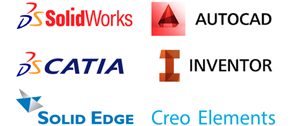As China's smartphone sales begin to plateau thanks to its impressive 90 percent penetration rate, the country that now finds itself the star of the moment in terms of the potential it offers phone makers is its neighbor, India. So it's no surprise that Apple, after years of ignoring the country, has decided to aggressively pursue the market here.
But is its strategy right? According to rumours, the company's plan is to resurrect the iPhone 4 (8GB) and flog it in India for Rs 15,000 ($240). So far, however, India's largest online store Flipkart is selling it at Rs 18,125 ($292), while the 16GB model is available for around Rs 29,000 ($465).
That Indians are attracted to Apple's brand is not in question. The iPhone 4's 8GB model, for instance, was a hot favourite amongst Indians — it's hard to believe that it was apparently amongst the top three best-selling models in the country, considering its measly 1.4 percent market share today.
That rock-bottom share makes sense when you realise that subsequently, Apple's phones have been pricing themselves out of the Indian market. Its iPhones are being sold at comparatively exorbitant prices (the 5s listing north of $800), and it has no presence in the sub-$500 category. Now, the question is, will the distinctly ancient iPhone 4 be both attractive enough in terms of price and specifications to woo the price-sensitive Indian consumer?
Indians are willing to buy "seconds" if they feel that they are getting a good deal, a concept commonly known in Hindi as Paisa Vasool (roughly, "value for money"). The problem for Apple is that the Android-saturated Indian market (over 90 percent) has exceptional phones at the Rs 15,000 price point, and the stakes are being raised as we speak. For instance, here's a recent entrant from Indian brand Lava (around 4 percent market share) that has been dubbed by the oxymoron, "a premium budget smartphone", the first of its kind in the country.
For Rs 15,990 (around $257), Lava gives you a sleek, sexy product running on stock Jelly Bean 4.2.1 with a magnesium alloy body, a 4.7-inch HD display, a MediaTek MT6589 chipset, 1GB of RAM, an 8MP camera in the back, a 3MP camera in the front, a panel that includes Sharp's OGS solution, and Gorilla Glass from Corning.
Then there is the Moto G that sold thousands of its phones in minutes on online store Flipkart, priced attractively at Rs 12,500 ($200) and a raging success here. The iPhone 4 will also have to battle the immensely successful Micromax with its Android "premium smartphone" killers, the reigning brand in India, Samsung with its "Grand" line-ups, and other scrappy challengers like the popular Nokia Lumia line and the Xolo brand of phones from Indian brand Lava. To add to its woes, the iPhone 4 has been criticized by reviewers for housing an underwhelming Apple A4 chip that apparently cannot keep pace with today's Android monsters.
If Apple wants to compete with the middle-segment smartphone buyer — the fastest-growing segment in the fastest-growing smartphone consumer market, with the biggest upside in terms of volume — in other words, the El Dorado of smartphones — it looks like it may need more than a hand-me-down to make inroads.
via apple - Google News http://ift.tt/1h4m4Cn













0 comments:
Post a Comment